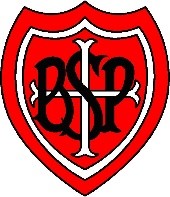Geography
At SBSP we follow the PKC Geography curriculum, which is knowledge rich. This means the knowledge children will gain has been carefully specified, ordered coherently and built over time. As children work through our geography curriculum they will know more, understand more about the world around them. A good geographical understanding relies on firm foundations of knowledge and skills. The skills our curriculum develops, like the knowledge, are specified, ordered coherently and progress over time. This curriculum structure helps pupils to deepen their understanding of physical and human geographical processes, fostering curiosity and fascination for the world we live in.
Approaching primary geography with a knowledge rich focus means that the knowledge children will be taught has been identified, in each year group, in each unit and in each lesson. As children work through the curriculum they will know more and understand more about their local area, the UK, Europe and the World. This rigorous approach, covering and going beyond the requirements of the National Curriculum, leaves nothing to chance, building geographical knowledge and understanding in a way that builds on children’s prior knowledge, allowing them to make meaningful connections and gain an understanding of how our world is connected.
Conceptual understanding is at the heart of our curriculum. Children will learn about key geographical concepts such as place, space, the environment and interconnection. Over time, working through an essential process of elaboration, children will add to their conceptual understanding with many examples of geographical knowledge in context. Children will become more skilled at answering questions such as; what is it like to live in this place? What are the challenges of this environment? How have people changed this landscape over time? Children will gain an understanding of what geographers do, what they look for and what they may say about a place.
Each year our geography curriculum begins with a ‘Spatial Sense’ unit that explicitly teaches geographical skills such as locating places on a map, positioning items on a map, using symbols in a key, interpreting scale, reading climate graphs, identifying locations using coordinates, interpreting population data, identifying elevation on relief maps and more. The spatial sense units for each year group are positioned at the beginning of the year to explicitly teach skills which will then be used in context throughout the rest of the year as children apply those skills to learn more about people, laces and the environment. The spatial sense units build on prior knowledge before moving children on as the level of challenges increases from year to year. The aim of the spatial sense units is to build children’s geographical literacy so that they are able to use an atlas, maps and geographical data with ease to answer any question they may have about the world.
Our geography curriculum equips pupils with knowledge about diverse places, people and environments. We have seen that arming children with powerful knowledge about the world around them helps them to develop a love for the subject of geography, and also recognise their own role in becoming a responsible global citizen.
